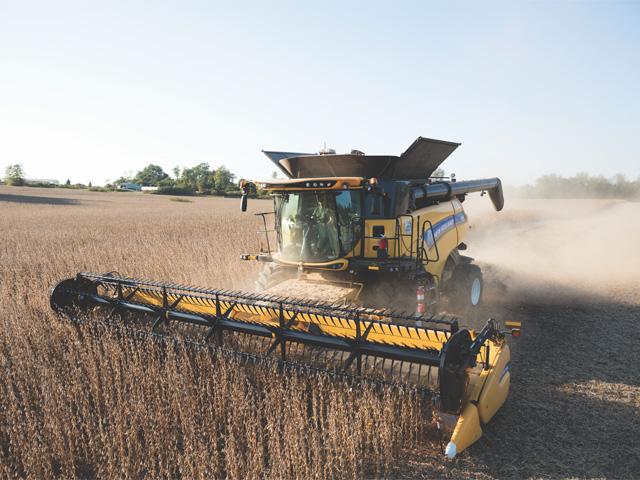Equipment Market Strong
Equipment Manufacturers Positive About 2022, but Uncertainties Rise
The Association of Equipment Manufacturers (AEM) has surveyed its members quarterly for nearly two years to understand how quickly they expect to recover their businesses to pre-COVID-19 levels. The responses had been positive.
But -- and there is always a "but" -- member data from the latest quarter has begun to move again in the other direction. "(That's) largely due to the headwinds we're facing with inflation, workforce issues and supply chain disruptions," said AEM Director of Market Intelligence Benjamin Duyck.
Recovering from a sharp, three-month economic downturn in the early days of COVID, equipment sales have since been good to quite strong. "The last recession we experienced ended the longest period of economic expansion in the United States, and that recession lasted from February 2020 to April 2020," said Duyck. "Two months, in traditional economic terms, can't even be accurately described as a recession. However, this economic disruption has impacted us all greatly, and we are still dealing with the aftereffects today -- labor shortages, supply chain problems and higher interest rates."
Yet, the economic picture is less than clear. For example, small tractor sales, those under 100 horsepower, rose sharply month-over-month from mid-2020 to almost the end of 2021. Even today, sales of those units remain positive over year-ago sales -- if not quite as strong as they had been. More recently, sales of two-wheel-drive tractors of more than 100 hp have turned sharply upward. Large tractors and combines have posted some up and down months, but generally sales have been steady.
Reflecting sales, AEM member growth expectations remain strong. Eighty-one percent expect year-over-year growth in the months ahead, and 91% expect growth to continue. Important to that outlook is farm income. It has continued to grow regardless of government support declines and high production cost increases, including anhydrous, potash and diesel.
P[L1] D[0x0] M[300x250] OOP[F] ADUNIT[] T[]
While the global economy remains on track to expand in 2022, the agriculture and construction equipment industries are challenged by various degrees of economic static. For example, grain markets and the war in Ukraine -- and however that conflict might spin off in unexpected directions.
As far as prices are concerned, corn and wheat prices have probably already seen their highs from concerns about Russia's assault on Ukraine -- unless something there goes off the rails more than anyone would expect, said DTN Lead Analyst Todd Hultman.
Ukraine's winter wheat crop is dormant, just a couple months from harvest. It is difficult to say how much harvest will be able to take place. "It is highly likely the world will miss its leading exporter in Ukraine of sunflower oil, third-largest exporter of barley and fourth-largest exporter of corn and wheat in 2022," Hultman said. "That will keep grain prices higher than normal in 2022, but there is a wide range of price volatility between normal and the extraordinary prices we've already seen this year, boosted by fears about the war."
As an act of self-preservation, Ukraine has banned the exports of corn, wheat, sunflower oil and fertilizer. Ukraine's ag minister said that if they are able to plant crops this spring, cereals will be preferred over corn, as they need the human food.
(Find Hultman's latest thinking on the war and market volatility here: https://www.dtnpf.com/….)
Inflation is another important concern inside the farm and construction equipment industries.
There has been an 11.7% year-over-year increase in the prices of farm machinery, Duyck said. On the construction side, inflation is coming in at 9.7%.
Talent acquisition is another significant issue, Duyck said. According to the results of AEM's most recent quarterly member survey, hiring on the manufacturing floor remains a major issue -- 84% of all respondents have experienced workforce issues. Manufacturers have developed a range of potential strategies and tactics for addressing hiring challenges -- internships, educational partnerships, higher wages, bonuses, marketing and recruitment efforts, flexible hours, and outsourcing. But the workforce will remain a prevalent issue for equipment manufacturers for the foreseeable future, he said.
And then, the supply chain feeding ag and construction equipment manufacturers remains an issue. Sales are strong, but deliveries of new equipment are sometimes long delayed, especially pieces of machinery where those inventories were depleted in 2021. Evidence of parts and materials shortages are clearly seen in the used equipment market where low-hour tractors and combines, grain carts, among other high-demand pieces of equipment garner prices not too short of new.
According to AEM's most recent quarterly survey of its members, more than 95% of ag and construction equipment manufacturers that responded said they are experiencing supply chain issues, Duyck said. However, it appears either demand is beginning to normalize or supply chain signaling is improving, because 44% of respondents noted the issues are beginning to turn around.
Dan Miller can be reached at dan.miller@dtn.com
Follow him on Twitter @DMillerPF
(c) Copyright 2022 DTN, LLC. All rights reserved.




